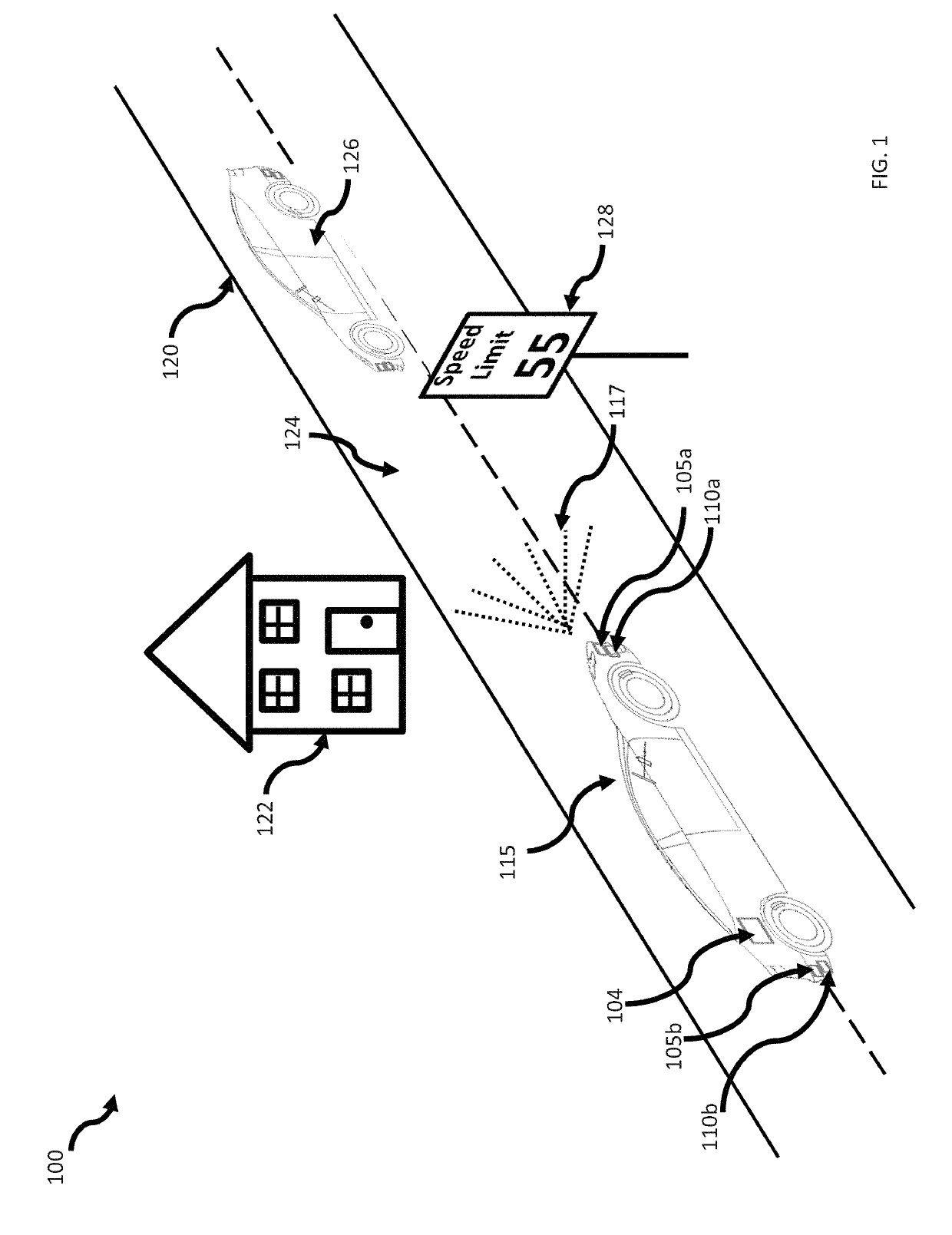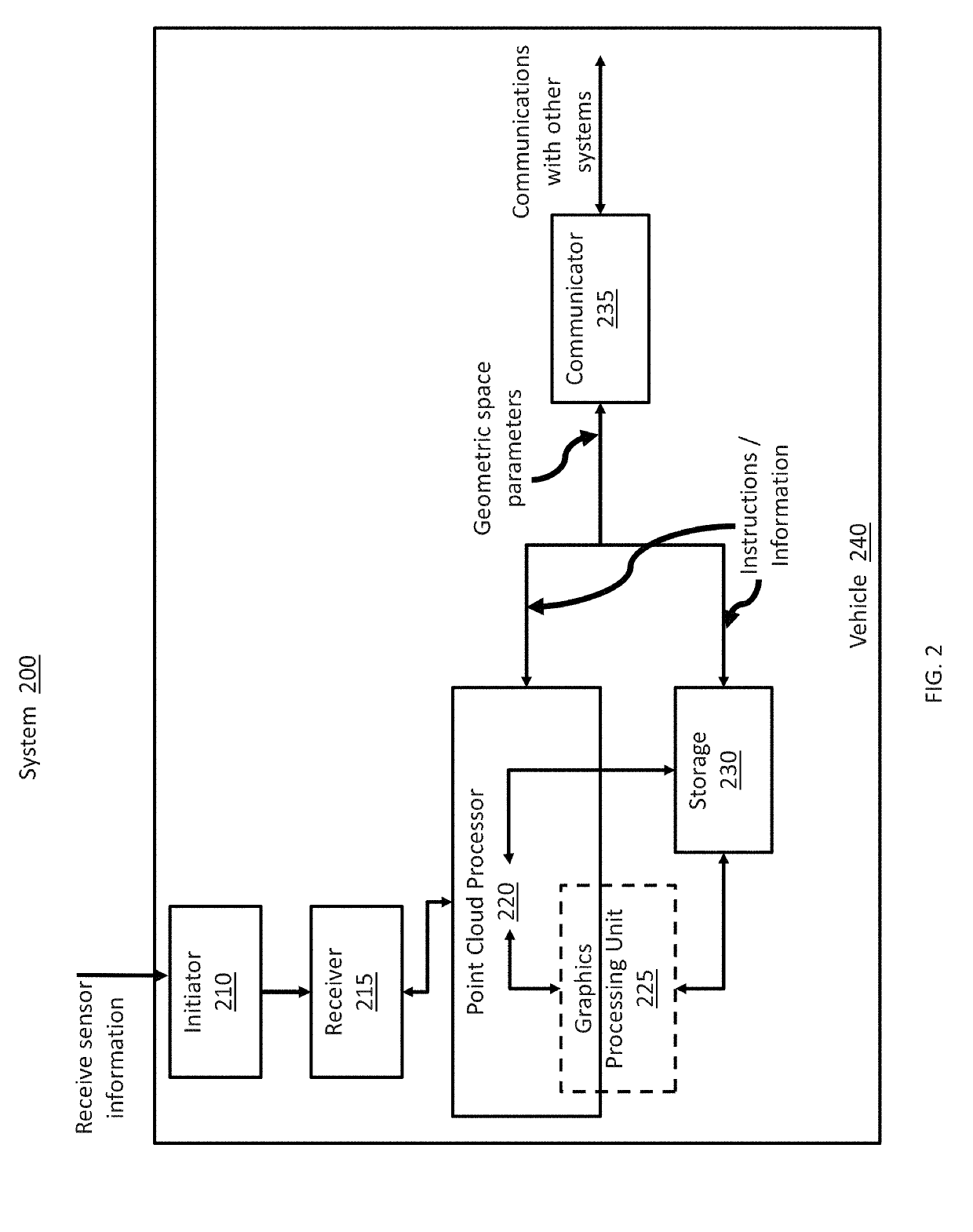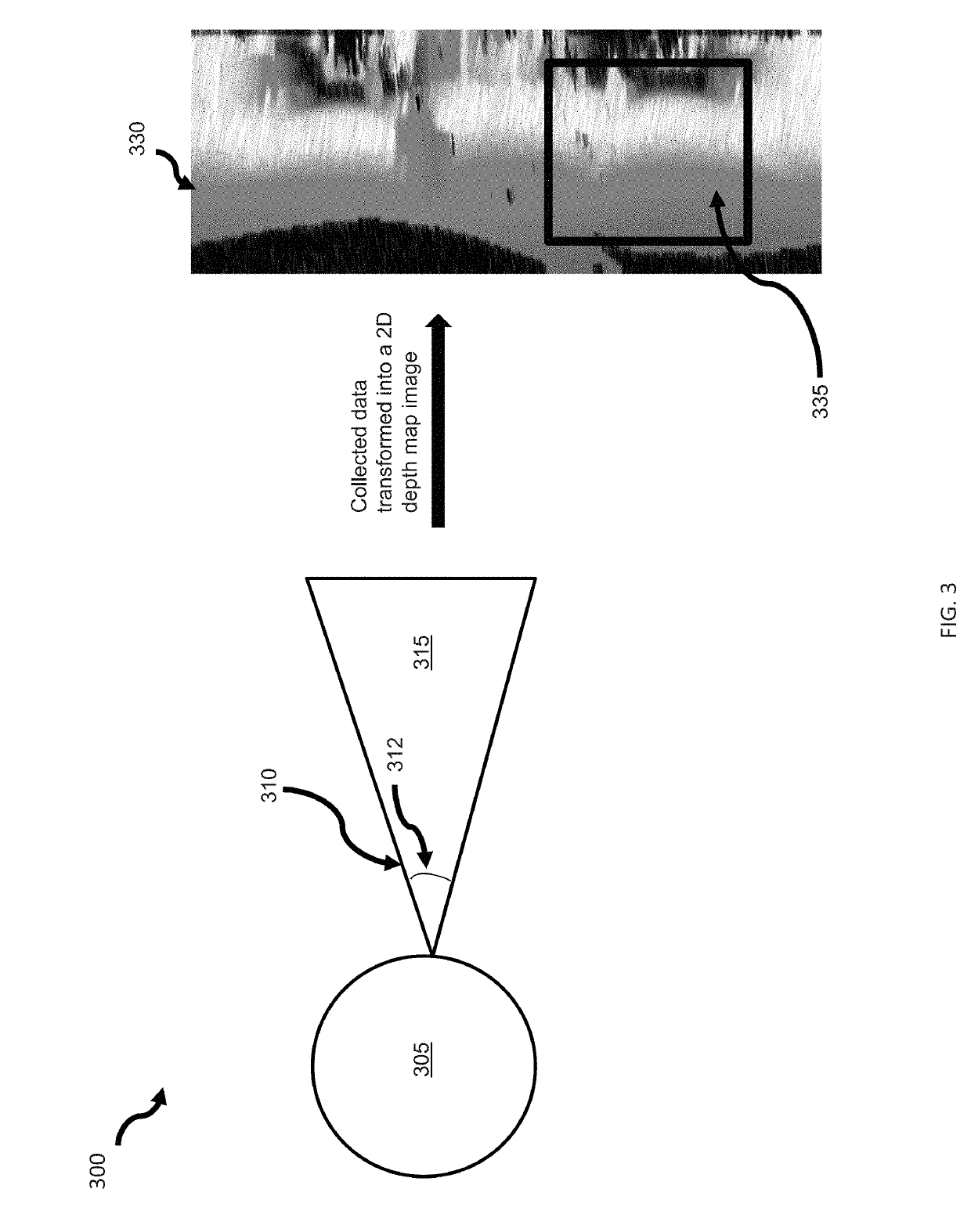Analysis of point cloud data using polar depth maps and planarization techniques
a technology of point cloud data and polar depth map, applied in image enhancement, scene recognition, instruments, etc., can solve the problems of increasing the amount of data needed to be processed, the difficulty of processing lidar data for real-time localization, and the inability to overcome the large amount of data being collected
- Summary
- Abstract
- Description
- Claims
- Application Information
AI Technical Summary
Benefits of technology
Problems solved by technology
Method used
Image
Examples
Embodiment Construction
[0016]In the self-driving, e.g., autonomous or semi-autonomous, vehicle industry, the examination of a vehicle's surrounding environment, or geometric space, can result in a collection of a large amount of three dimensional (3D) data points. The data points can be organized as a cloud of data points, i.e., a point cloud, as the data generally represents the space around the vehicle, i.e., a 3D perspective of the geometric space surrounding, or partially surrounding, a vehicle. The vehicle can be of various types of vehicles that are capable of operating with minimal or no human intervention, for example, without limitation, automobiles, box trucks, trucks with trailers, drones, ATVs, robotics, indoor robots, airplanes, rockets, missiles, spacecraft, and other types of vehicles. An example of such a vehicle is shown in FIG. 1.
[0017]Various types of data collection technologies or systems can be used, in different combinations, to periodically collect data in a 3D space. For example, ...
PUM
 Login to View More
Login to View More Abstract
Description
Claims
Application Information
 Login to View More
Login to View More - R&D
- Intellectual Property
- Life Sciences
- Materials
- Tech Scout
- Unparalleled Data Quality
- Higher Quality Content
- 60% Fewer Hallucinations
Browse by: Latest US Patents, China's latest patents, Technical Efficacy Thesaurus, Application Domain, Technology Topic, Popular Technical Reports.
© 2025 PatSnap. All rights reserved.Legal|Privacy policy|Modern Slavery Act Transparency Statement|Sitemap|About US| Contact US: help@patsnap.com



